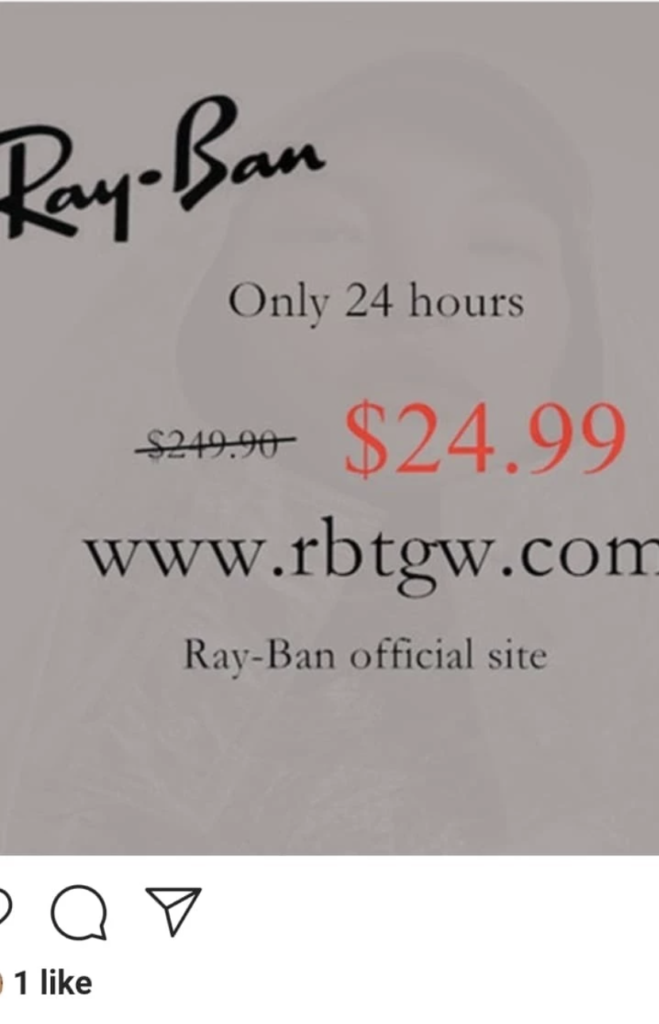Fake RayBan Shopping Scam!

Several of our users and social media followers have sent this post in. This one is from Instagram, but if you find it on any other social media platform, please disregard. IT IS A SCAM!
There are many version of this. They generally consist of the Ray-Ban logo and claims to offer “90% off” and of-course with a prompt of “better hurry, only one day sale”.
THIS IS A FAKE WEBSITE. If something is too good to be true, it probably is. If you send in the money, please understand that you will not be receiving any Ray-Bans. Some say that the Ray-Bans could be fake. Nonetheless, always be aware when you see posts like this that give you a time period like 24HRS.
The Scam Plot
This is a psychological attack by scammers to make you send money quickly without thinking through what you are buying. This works because it has individuals thinking that they are running out of time and could be potentially missing out on a deal. Don’t fall for it! Always think through your purchase, especially in cases like this where the price has dramatically dropped.
The website is a phishing plot to steal your personal info and instagram login information. It is designed to lure unwitting victims to type in their details into the website. And once the account is hijacked, the scammers can use your account to spread the details to even more people.
How to Avoid
If the promotion on Social media looks too good to be true, it probably is. Avoid clicking any suspicious links that has unrealistically temping offers.
If you did enter your details into the website, make sure to go into your instagram and log out of all your sessions and change your password.
It is often good idea to set up two factor authentication so that your account is more secure and gives you an extra-layer of security.
If you see a friend has posted this ad, make sure to warn them and ask them to remove the posts to prevent more people from falling victim.




Responses